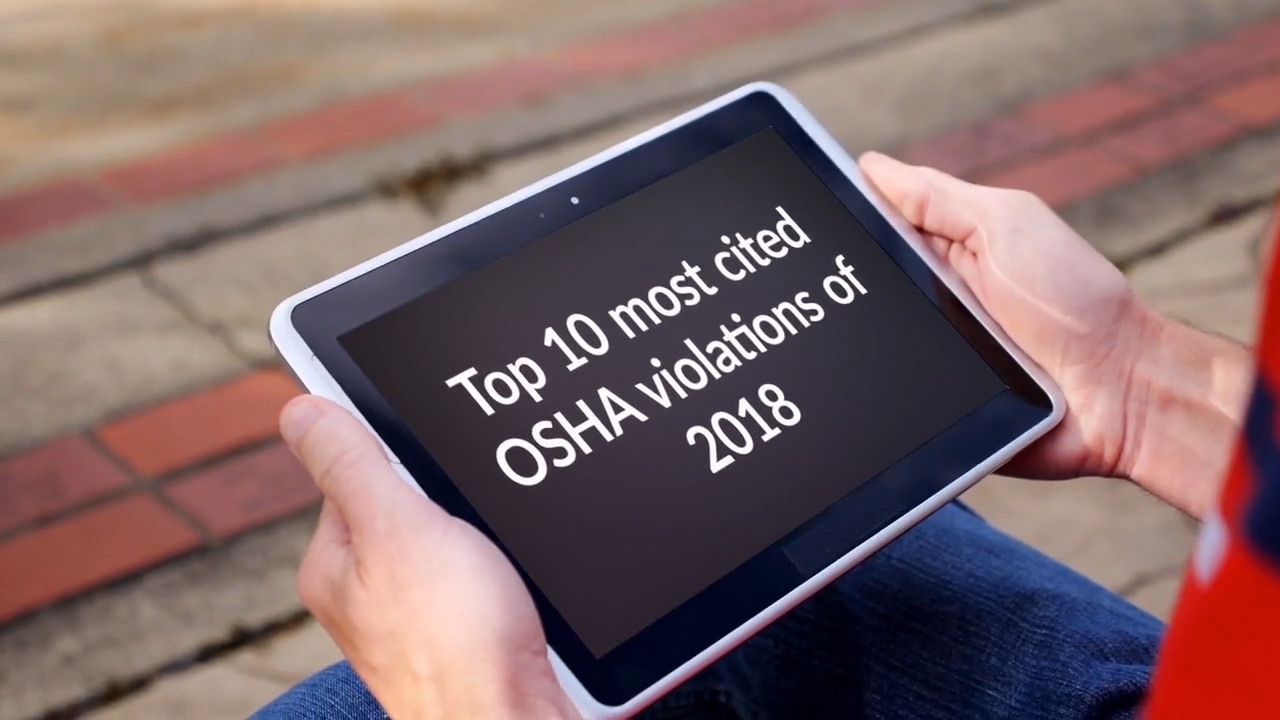The Occupational Safety and Health Administration (OSHA) released its preliminary top 10 violations for 2018 in late October at the 2018 National Safety Council Congress & Expo .
These standards were the most frequently cited during OSHA’s fiscal year that ended September 30. According to OSHA, the list serves to “increase awareness of these standards so employers can take steps to find and fix the hazards to prevent injury or illness.”
The top 10 most frequently cited OSHA violations for 2018
Fall protection has topped the list of most-cited OSHA violations for eight years in a row, and many of the other standards continue to be in the top 10 year after year. The only new item in 2018 is eye and face protection at number 10.
Here’s the full list:
- Fall protection – general requirements
- Hazard communication
- Scaffolding
- Respiratory protection
- Lockout/tagout
- Ladders
- Powered industrial trucks
- Fall protection – training requirements
- Machine guarding
- Eye and face protection

Safety resources from SFM and OSHA
SFM and OSHA both offer safety resources to educate employers and workers on common sources of violations and injuries. See below for a sampling of resources for each of the top 10 violations.
Fall protection
Hazard communication
Scaffolding
Respiratory protection
Lockout/tagout
Ladders
Powered industrial trucks
- Forklift inspection 5-Minute Solution
- Forklift safety 5-Minute Solution
- Forklift safety for pedestrians 5-Minute Solution
- OSHA powered industrial truck eTool
Machine guarding
Eye and face protection
- Eye protection 5-Minute Solution
- Personal protective equipment CompTalk
- Personal protective equipment checklist poster
This post was originally published on December 6, 2017, and updated on October 31, 2018.
Want more content like this?
Get the latest Simply Work Comp blog posts in your inbox.
